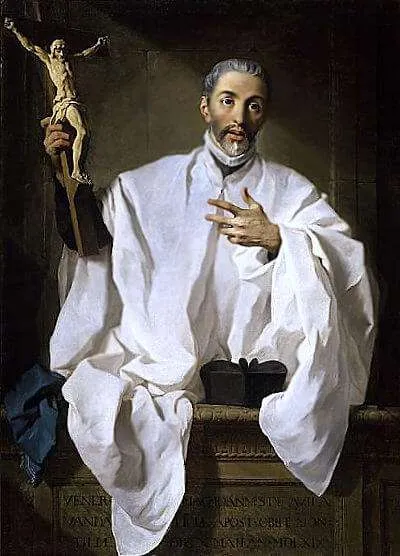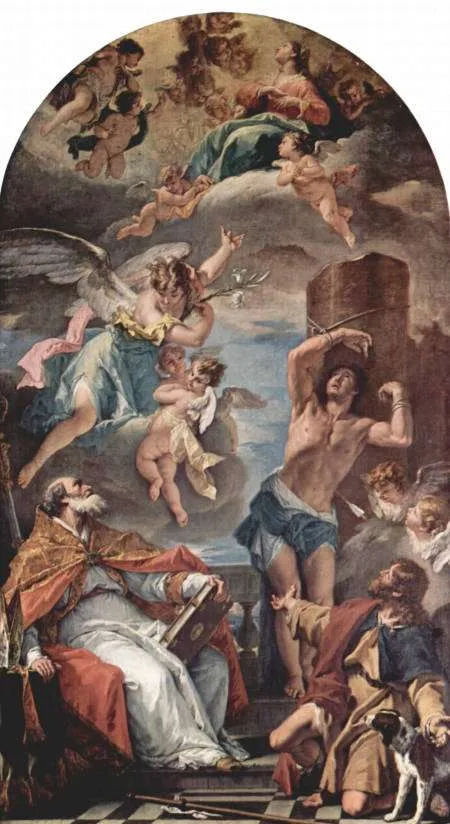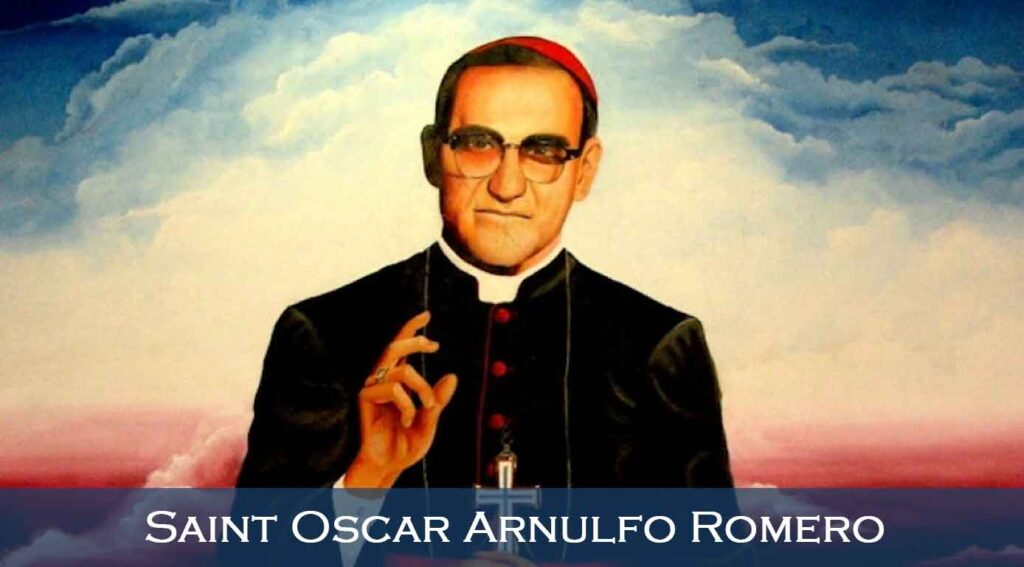1499–1569; Patron Saint of Spanish priests; Canonized by Pope Paul VI on May 31, 1970; Proclaimed a Doctor of the Church by Pope Benedict XVI on October 7, 2012
Though today’s saint bears the name of Ávila, that was simply his name, not where he was from. John of Ávila was born in the town of Almodóvar del Campo, Spain, less than a decade after Spain was liberated from almost 800 years of Muslim rule. He was an only child born later in life to his parents who had struggled to conceive. His noble, wealthy, and devout parents attributed John’s birth to the intercession of Saint Bridget of Sweden. Notably, John was born on the Feast of the Epiphany.
At the age of fourteen, John was sent to study law at the renowned University of Salamanca, but he never completed his law degree. After four years of study, John had a profound conversion experience, after which he returned to his parents’ home for a three-year period of prayer and discernment. During that time, John began to hear God calling him to the priesthood. He sought spiritual advice from a Franciscan friar who told John that he believed him to be called to the priesthood and that he must go. That spiritual advice confirmed John’s interior calling, and in 1520 he began his theological studies. While in seminary, John was blessed with excellent teachers who were well versed in the theology of Saint Thomas Aquinas. John was smart, a good student, and very devout, especially regarding the Holy Eucharist. When John returned home in 1526, he was ordained a priest and celebrated his first Mass in his home parish.
Toward the end of his studies, both of John’s parents died. Being an only child of wealthy parents, John received a large inheritance. Though he could have used some of that money to throw a large ordination party for himself, he chose to do something more radical. He went out into the streets, found twelve poor people, and invited them to share a feast with him. He then sold the property he inherited and gave his money to the poor.
With his parents and childhood home gone, Father John decided to become a missionary to the West Indies. To achieve that goal, he contacted the newly appointed first bishop of Mexico who was waiting to sail to the New World. After receiving permission to travel with him, Father John went to Seville to wait for a ship. While waiting, he began to engage in public ministry in Seville, quickly drawing admiration for his devout celebration of the Mass, his preaching, and his catechetical approach. A local priest named Father Contreras, with whom he might have been living, became very impressed with Father John. Father Contreras spoke to the Archbishop of Seville, asking him to intervene and convince Father John to stay in the archdiocese. The archbishop did intervene and convinced Father John to abandon his desire to travel to the New World so he could remain in Spain to help revive the faith that had been so severely damaged by centuries of Muslim rule, as well as the confusion that was emerging from the Protestant Reformation.
In 1529, at the age of thirty, just three years a priest, Father John of Ávila began his ministry in the town of Andalusia. He would later be known affectionately as “the apostle of Andalusia.” He continued his studies at the local university and eventually earned the impressive title of “Master.” Father “Master” Ávila’s priestly ministry was abundantly fruitful in Andalusia. He often preached on repentance and on the value of the Sacrament of Confession, preparing for his sermons and celebration of Mass with long periods of prayer. After his sermons to an overflowing congregation, he would often enter the confessional and remain there for hours until everyone who wanted to confess their sins was able to do so.
Father John’s preaching not only bore good fruit, it also stirred up animosity. Father John lived a life of radical poverty and regularly preached about the dangers of excessive wealth. Some of the local clergy were convicted by his preaching because of their lavish lifestyles, so Father John was reported to the Inquisition, subsequently arrested, and imprisoned. The charge was that he had preached in a sermon that “the doors of Heaven are closed to the rich…” Though many would despair during such a personal persecution, Father John did not. During his yearlong imprisonment he devoted himself to prayer, study, and writing. He translated the book, Imitation of Christ, and wrote much of his most famous book Audi, filia (Listen, O Daughter), a spiritual masterpiece on Christian perfection and the universal call to holiness, written at the request of a Spanish nun, a spiritual directee of Father John. After a year, the Inquisition found him not guilty of any crime, and he was released in 1533. For the next eighteen years, Father John engaged in active ministry in Andalusia and the surrounding towns where he gained quite a following. In 1551 he began to experience ill health and lived a semi-retired life until his death in 1569.
Throughout his ministry, Father John became a saint among other saints, offering spiritual direction and counsel to many. He became a mentor to Saint Ignatius of Loyola and inspired many young men to join Ignatius’ newly founded Society of Jesus. He advised the great Saint Teresa of Ávila, who sought his counsel on her writings. Saint John of God was converted by John of Ávila’s preaching and then founded the Brothers Hospitallers, a religious congregation devoted to the poor, sick, and mentally ill. He counseled Saint Francis Borgia, the third General Superior of the Jesuits, the Franciscan friar Saint Peter of Alcántara, the bishop Saint Thomas of Villanova, as well as other bishops, religious, civil rulers, and numerous spiritual directees. Not only did he leave behind a legacy by affecting so many people during his lifetime, he also left behind his spiritual classic Audi, filia, eighty-two sermons, Scripture commentaries, 257 letters, and various other minor works on reform in the Church in the spirit of the great Council of Trent in which he participated.
Though he lived in the sixteenth century, Saint John of Ávila was not canonized until 1970 and was made a Doctor of the Church in 2012. Why did it take so long? Perhaps one reason is that the Church of the twenty-first century needs to revisit John’s preaching. We need to return to his teachings on simplicity, poverty, the universal call to holiness, his vigorous attempts to reform the clergy, his devotion to the holy Mass, and his passionate pleas for repentance from sin.
As we honor this sixteenth-century saint, look to him also as a role model for the Church. He began with a desire to be a foreign missionary but found his homeland to be the mission field to which he was called. Ponder your own call to evangelize those closest to you. Doing great things for God often starts at home. Commit yourself to that mission field, and pray that God will bear much good fruit through your efforts. If you suffer as a result, be encouraged by Saint John’s imprisonment and know that God can bring forth good from everything you are called to endure.
Source: https://mycatholic.life/saints/saints-of-the-liturgical-year/saint-john-of-avila/








